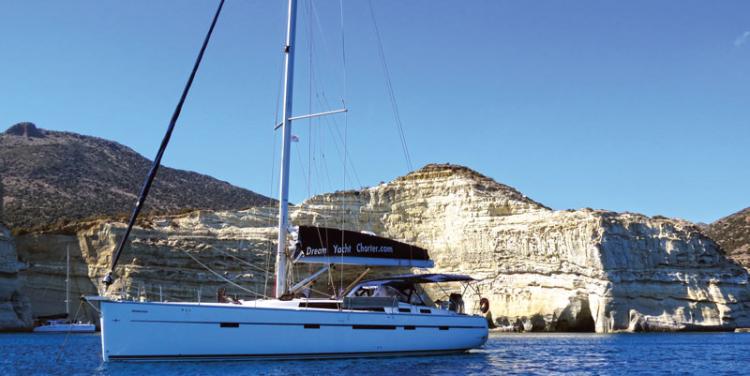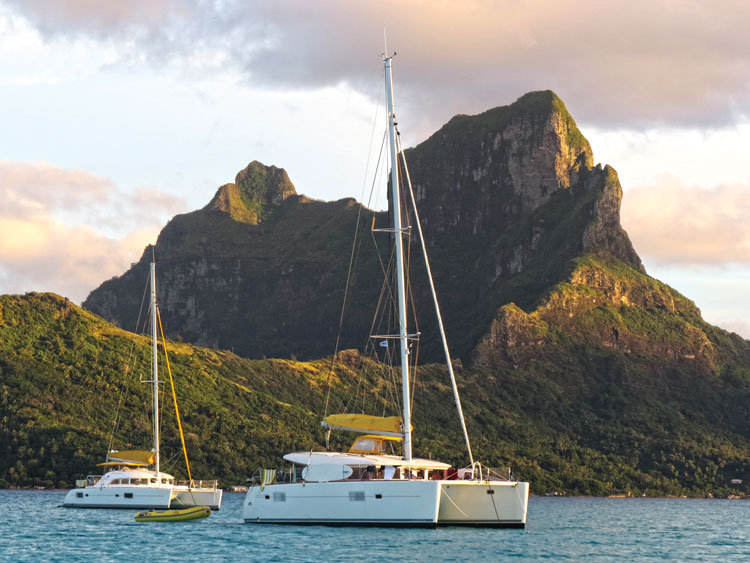What to Pack as a Professional Sailing Charter Captain
I skipper charters around the world, and I never know what I’ll get in terms of boat equipment, tools, or even crew. To minimize surprises, I’ve learned to pack two bags: one with personal items like sunscreen, sunglasses, and hats, and one as captain with a bevy of backup essentials in case the boat or crew are under-prepared.

Here’s what’s in my kit on every trip.
1. Boating guides and chart kits
Boating guides and charts are a great way to study the cruising area before you even leave home. You can get advanced knowledge of anchorages, prevailing winds and provisioning opportunities. Although cruising guides are often provided by the charter company, what you find aboard may be in a foreign language or not in great shape. Be sure to bring your guides along in your carry-on so you can read them on the flight and have fresh knowledge and good questions for your chart briefing.
2. Smartphone or tablet
With a built-in camera, phones come in handy to take pictures during the technical checkout and chart briefing. You can record (audio or video) equipment issues and instructions and capture advice on highlights, hazards, and weather conditions. Also, a tablet or phone with a playlist is a nice substitute for a broken shipboard stereo, and when within WiFi range, you can use apps for navigation or AIS. Finally, a smartphone is a great way to reach crew (call or text) who have gone ashore.
3. Binoculars
Just about every charter boat will supply binoculars. Unfortunately, they are usually of low quality, may be damaged, or are covered in something sticky that you don’t want near your face. I leave the heavy professional series at home, but I do bring small waterproof binoculars perfect for both finding distant channel markers and sightseeing on land.
4. Flashlight and headlamp
A headlamp comes in handy when you need both hands to fix equipment, hold on in a blow, or grill in the dark. I also bring a long-lasting LED flashlight to find the dinghy in the dark or locate the path to the beach after a late-night dinner. Shipboard flashlights are rarely in good working order and typically have dead batteries, so bring your own and avoid surprises.
5. Handheld VHF radio and GPS
Although most charter boats will have a fixed VHF, an additional handheld serves two purposes. First, it will be a backup if the boat radio fails. Second, if it’s waterproof, you can give it to crew taking the dinghy out for exploration so that you can call them back to the boat or they can call you if the outboard fails.
Chartplotters are pretty standard on charter boats these days; a handheld GPS will be a backup if the shipboard plotter stops working. It will also be a foolproof way to get your latitude/longitude in case you have no idea how to work the brand of plotter that is aboard.

6. Batteries
With so many handheld devices and flashlights, it’s good to bring along appropriately sized batteries. More often than not, it’s the crew who will need them, so you’ll be a hero if you have extra.
7. Tools and necessities
A multi-tool such as a Leatherman is critical for quick jobs or when the boat’s tool kit is sparse. The basics include flat and Philips head screwdrivers, pliers, assorted knives, and even a corkscrew. (A multi-tool must go in your checked luggage, not in the carry-on.) Any kind of tape is good, too. Electrical tape is fantastic for taping everything from wiring to shoes that are falling apart. Self-amalgamating silicone tape sticks to itself and is a one-size-fits-all bonding material that is small and light enough to toss in your bag.
Charter boats are always short on spare line. Short bits of small diameter string can help tie up a broken sliding door on a catamaran, or help secure a dinghy on its davits. I bring three five-foot lengths of 1/8 inch Dacron line. Zip Ties, or cable ties, are great when line isn’t available. These small strips of plastic are strong enough to take on a real mechanical challenge but can also be used to secure a pirate flag to a halyard. I usually carry at least a dozen.
8. Watch
Standing watches in a storm is not the time to pull out your smartphone on a wet deck. An inexpensive waterproof watch (preferably with an integrated light) will keep you on time even when snorkeling or hiking and will allow you to keep expensive smartphones tucked away in a safe and dry place.
9. Medicine
First aid kits are required on charter boats. Some are quite good, while others have expired meds and slimy Band-Aids. I bring some basics including seasickness and cold medicines, small packets of antibacterial and burn gels, and fresh Band-Aids in assorted sizes. It’s likely that these medical supplies will be needed by your crew more than by you, so think about who will be on your trip and what they may require.
10. Games
To keep bored crew from getting unruly, I bring along a deck of cards and a game kit. These kits are small, affordable, and usually have multiple games including chess, checkers, and backgammon. This is a great addition for sitting out a rainy afternoon on the hook or to entertain kids after dark.
There’s nothing better than good preparation, and since the ship and all aboard will be your responsibility for a week, it’s up to you to think ahead. Luckily, a few small details can make a big difference.
Zuzana Prochazka is a freelance author and photographer who works for a dozen boating and travel magazines. A USCG 100-ton Master, Zuzana is the founder of Zescapes.com, a charter and flotilla organizer.




